From September onwards in the UK, the hedgerow plant blackthorn (Prunus spinosa), or sloe, produces fruit in abundance. Known as drupes, the deep purple fruit have stones that are large for the size of the fruit.
When sloes are cooked, they have a deeply plummy flavour, but if you try one uncooked, your mouth might feel it will be dry for ever – they are spectacularly astringent and sour
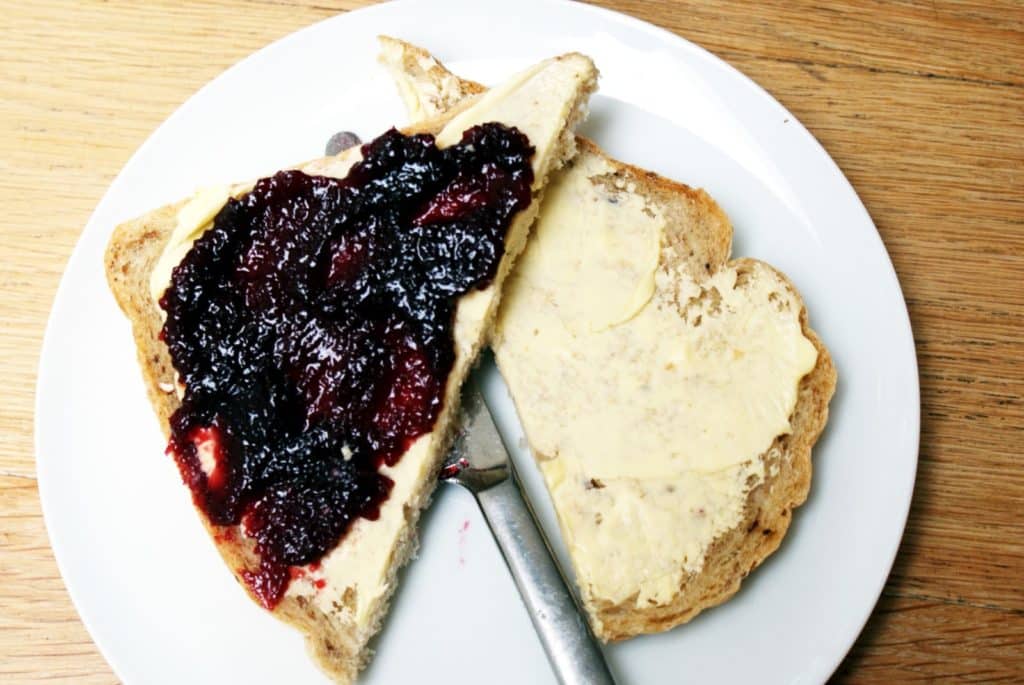
When should you pick sloes?
Many people wait until after the first frost to pick sloes, but you can mimic the effect of a frost by freezing them to split the skins. The split skins are desirable if you are intending to make sloe gin, a very popular delicacy.
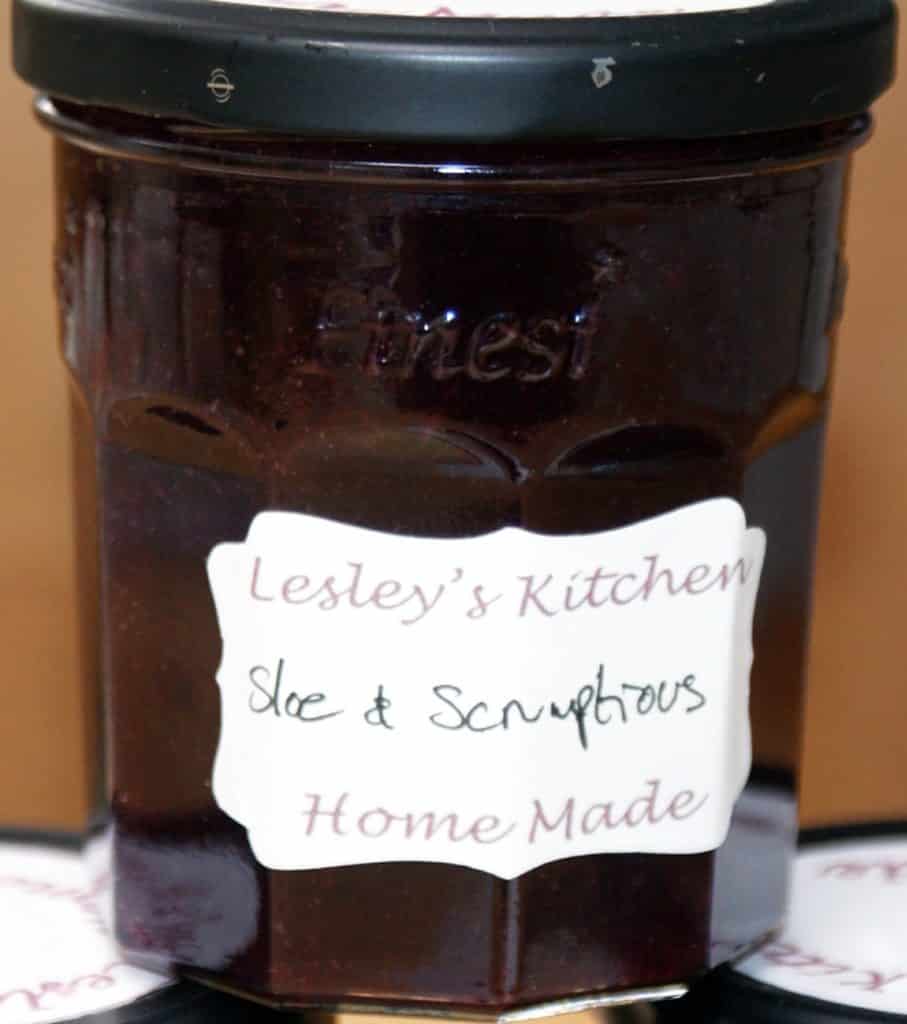
Sloe and Apple Jam
Sloe jam is deeply, fruitily plummy. It sets so firm you can slice it! I’m really pleased with my first attempt and will definitely be making some more next year
I used some apples from the garden. I thinned out some of the Scrumptious apples so the remaining ones can swell. They live up to their name, being truly scrumptious, and are useful to cook with, as well as eat just as they are
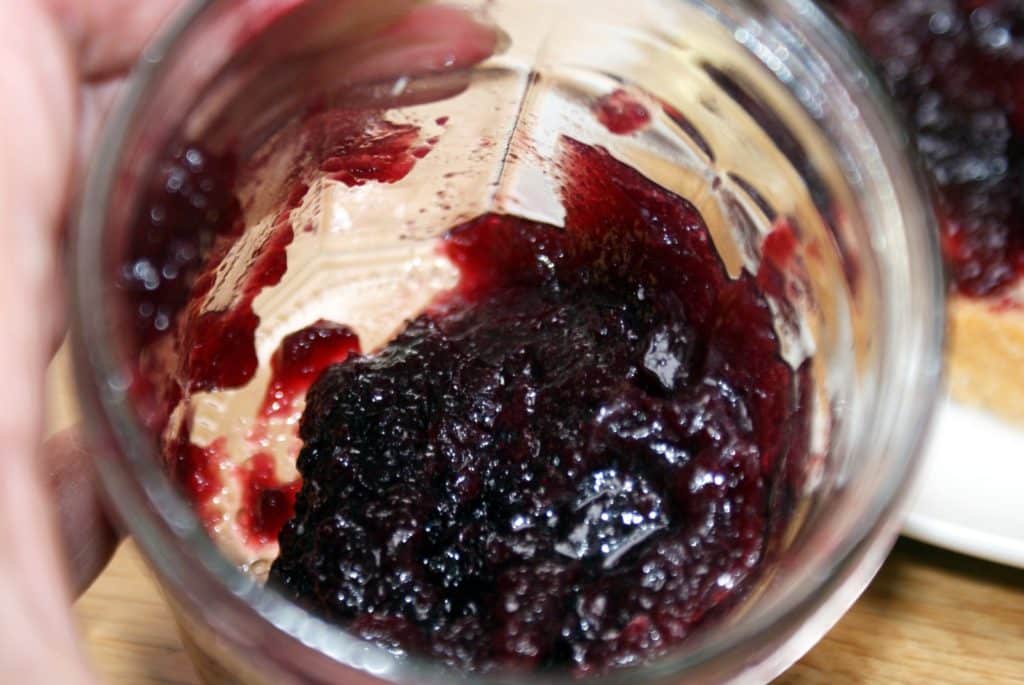
Some other sloe recipes
Other sloe recipes include a syrup, which sounds wonderful, although I think I would water bath preserve it in small bottles so I didn’t have to use too much at any one time
Sloe gin is the sloe recipe most often given, and lovely as it is, there are more recipes with sloes than just gin.
These sloe chocolates from Sipsmith sound simply amazing!
After cooking sloes, or removing them from your sloe gin, remove any remaining pips, lay them in a single layer on a lined baking sheet, and dust with cinnamon and orange zest. Melt good-quality chocolate in a double boiler and pour over the berries until well coated. Leave to chill in the freezer until they’re set. These are sure to go quickly!
I love this sloe treacle tart, can’t wait for autumn so I can try it! It’s made using sloe syrup which also sounds utterly gorgeous and super versatile
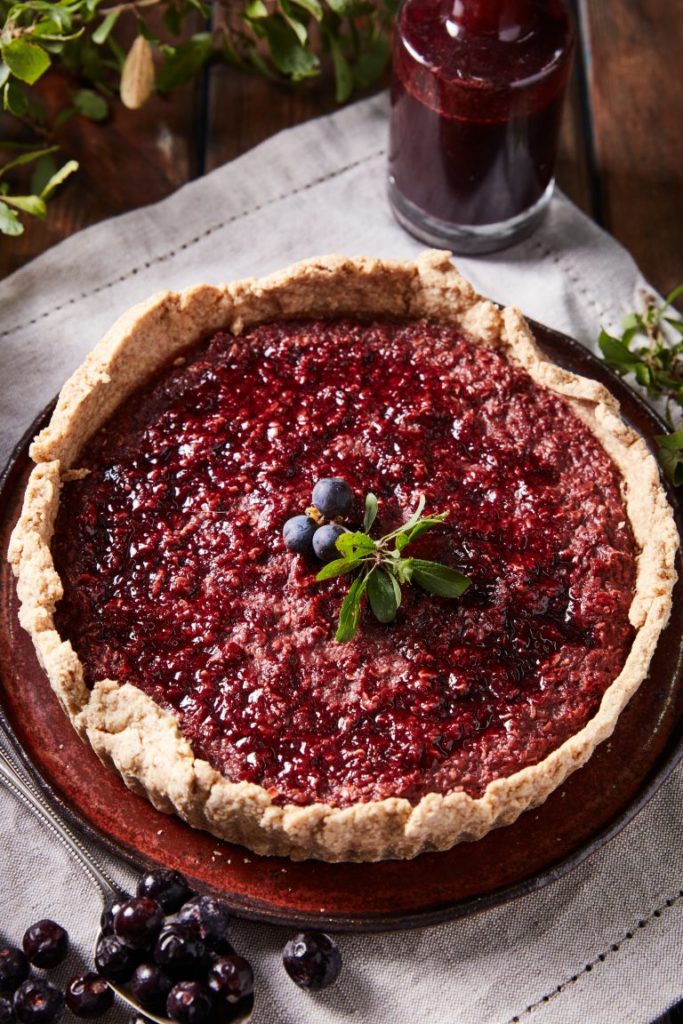
Some other jam recipes on Thrifty Lesley
Apricot jam. Fresh and wonderful, and better than even the poshest versions you can buy!
Using up bits and pieces of fruit to make a lovely fresh Summer Berry jam
Instructions
Sloe Berries
- First of all, pick over and wash your sloe berries. Sort through them and remove any leaves, stones and unusable sloe berries. Give them a rinse under the tap and drain.
- Now put the sloe berries and water in a large saucepan able to tolerate very hot temperatures. You don’t need a preserving pan if you haven’t got one. If you do have one of course, feel free to use it. I tend to use my large stock pot
- Cover, bring to the boil, and simmer gently for around 10 minutes. Stir every now and again to prevent the pulp sticking and burning.
- Now put the sieve over a heat proof bowl, tip the sloe berries into the sieve and push as much pulp as you can get through the sieve. Sloe berries have large stones for the size of the fruit
Apples
- Peel and core the apples. Remove any bruised parts or any insect damage
- Slice finely and place in the preserving pan, or large saucepan along with the lemon zest and juice
Jam
- Add the sloe pulp to the pan
- Simmer gently until the apples are cooked through. Depending on the type of apples you used, they may cook down to a mush, or they may remain whole. If the pieces are too large, whizz with a stick blender to mush them down
- Do not rush this step. Cook the fruit on too high a heat and they may catch and give your lovely jam a burnt flavour. Cook for not enough time and you’ll have hard or chewy fruit in the finished jam.
- Once the fruit is soft enough, add the sugar. Remove the lid and boil a bit faster until setting point is reached. This should be about 10 minutes. This jam sets really well, so shouldn't take long. Don't boil too hard as the mix is quite thick, like a puree, and it may stick
- You can test the set by putting a teaspoon of jam on a cold saucer and putting it in the fridge for a couple of minutes. If it’s ready, it will have formed a skin in that time and when you push it gently with a finger you’ll see that skin.
- If you have a thermometer able to measure high enough, it should set when it reaches 104c/220f. Just keep simmering until it’s ready.
- While the jam is simmering, sort your jam jars out. If you haven’t already, wash them, and pop them in a low oven to sterilise them. Some people use jars fresh from the dishwasher. Whatever you do, they need to be very clean, and dry.Any water in the jars allows a sugar syrup to develop, and over time, that may well grow mould, spoiling your lovely jam. And they need to be scrupulously clean so your jam will keep well, there must be no germs, bacteria or mould spores at all in the jars.And don’t forget the lids. If you are not using lids, cover the jars with cellophane circles and elastic bands. Or use circles cut from cereal box inners and perhaps a pretty ribbon. A little gingham fabric looks fabulous. Anything that will keep the jam clean and dry will do the job.
- Once the jam is ready to set, there may be scum on the top. Either skim it off, or stir in a generous knob of butter, this gets rid of any scum floating on the surface. Stir well. Leave to cool for about 10 minutes, stirring now and again
- Put your jars on a heatproof surface and carefully ladle in the jam. Be careful, splashes will burn you badly at this temperature. A jam funnel is helpful for this
- I usually put a very clean tea towel over the filled jars until they are just warm and only then put the lid on. The tea towel is to keep any mould spores in the air, off the surface of the jam.Others have recommended putting the lids on straight away and turning the jars upside down
Equipment Needed
Notes
Got a great recipe? How about submitting it to appear on Thrifty Lesley!

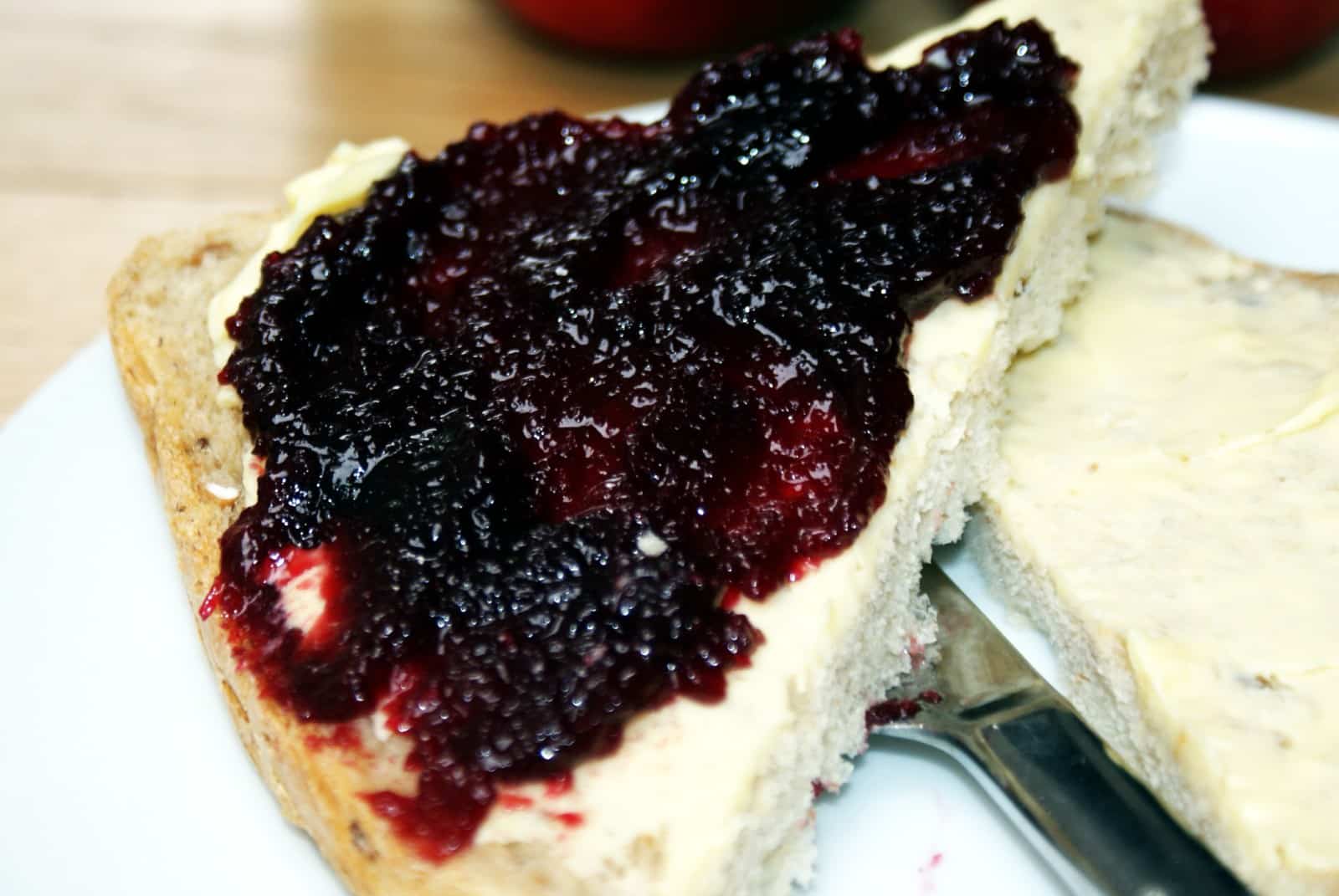
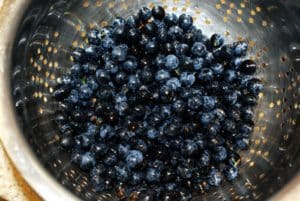









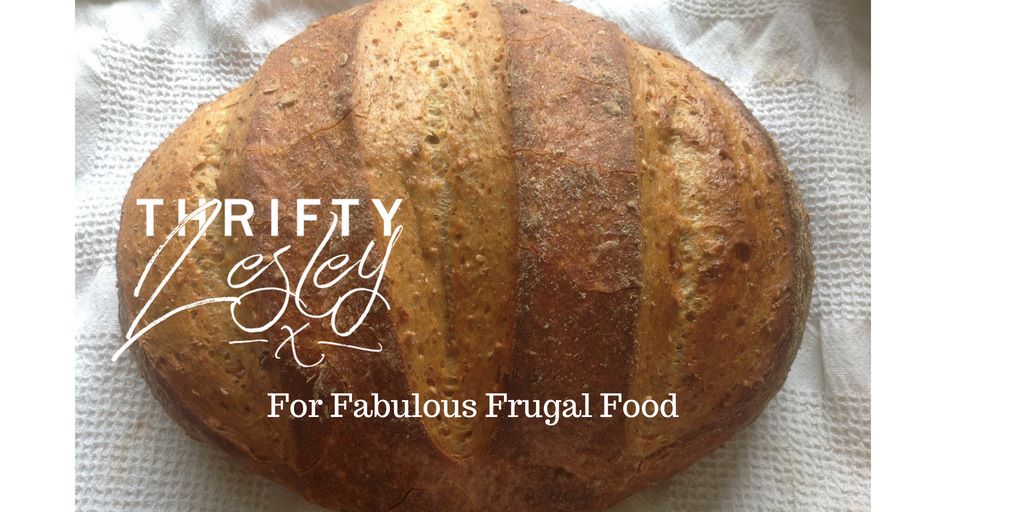

hmm, sloes are spectacularly astringent if even raw or own their own without sugar. Was there the same amount of apples in there as sloes? The apples reduce the bitterness and astringency. My jam isn’t cat tongue at all, and that has equal amounts of sloes and apples. The extra bit if sugar shouldn’t make that kind of difference
Love the flavour; I used 700 grams and was sweet enough.
It turned out great all together, but leaves the tongue feeling quite dry and a bit rough, kinda cat tongue… Almost as if it was astringent.
Any ideas why?
Thanks for sharing!!
Hooray! So glad it worked for you
Thanks for sharing this recipe…..had several trys at jam making… .all failures .imagine my joy with this lovely successful recipe,
I can make jam ! Woohoo.
well that’s worth knowing. We have minimal sloes left here now, not that many to begin with
Just done my third batch .Even better think the sloes were good as picked at correct time October used same apples Spartan they don’t mush down as easy as perhaps a cooking apple or scrumptious as Lesley used.so let them cook a little longer then blitzed as suggested.so this lot were a beautiful deep red and possibly richer flavour eaten with cheese &biscuits delicious Carol
I just used ordinary sugar. You only really need to add pectin to low pectin fruit and the sloes have masses. It set so well you could slice it!
Sounds like a great recipe but I have a question. I was recently looking up a blackberry jam recipe which said to use jam sugar (with added pectin). Is that what you used or just normal sugar? I have a bottle of pectin already because I couldn’t find jam sugar.
Fantastic! I really liked it and will def be doing more next year
Have done two lots so far and both came out great.Such a nice change from other varieties.
Found making the pulp quite hard work I don’t have a jam sieve or funnel but used my small flour sieve but a lot of pulp left so husbands idea rinse with a little water & sugar back in sieve and added that to the sugar part not much water just the residue left on sieve but seemed to do the trick .Made a few small jars to give as presents.
Will certainly do again .
Carol
I retain the water, as it is the only water used in the cooking.
If you use more, it would need to be boiled off when simmering the jam before it reached setting point
It seems like a straightforward recipe with great ingredients. One question though- when tipping the sloes (and the water they were boiled in) through the sieve, do you retain the water or discard it before pulping the sloes?